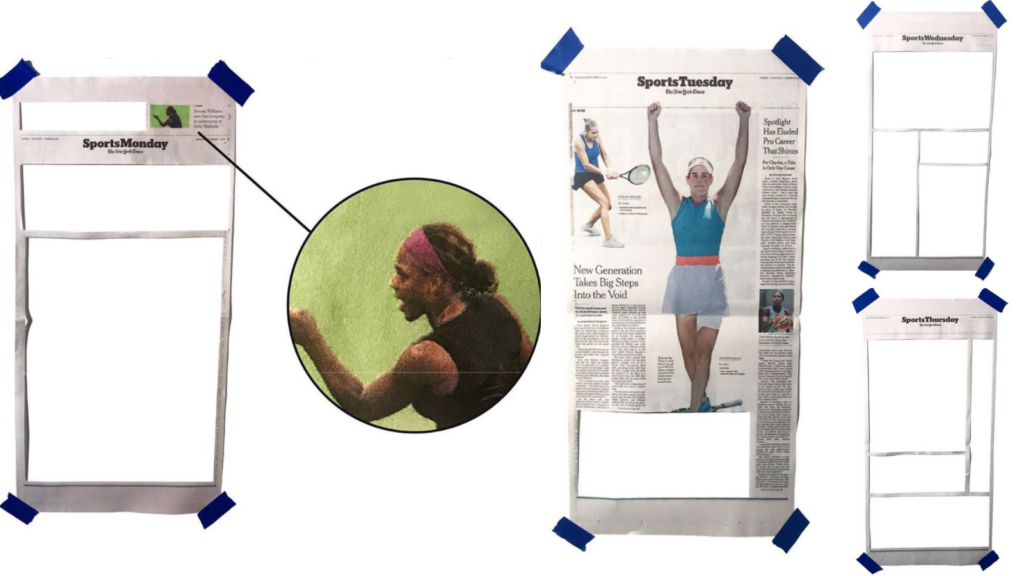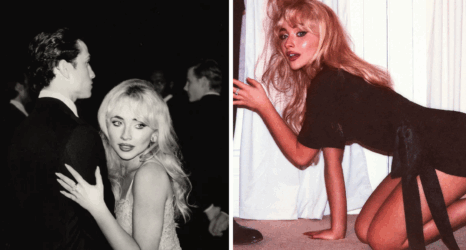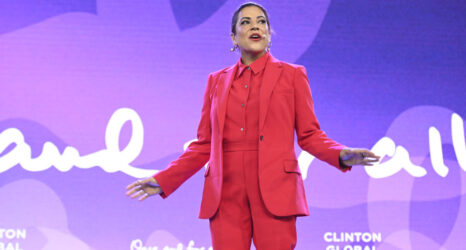
A former track and field athlete in high school, Katherine Burgess has been a dedicated fan of women’s sports. But she always found media coverage of women athletes lacking (to say the least). So she decided to call it out.
Burgess, who is a graphic designer, has created a series of visual representations of this gender disparity in sports reporting, which she’s shared on social media.
Everyday for a week, she used an X-acto knife to cut men’s sports articles out of the front page of the New York Times sports section. What remained were empty or nearly empty spreads, with only a few paragraphs highlighting women.
“Proper representation for women in the field is an issue that’s been an ongoing problem, and I was curious on how visually striking or different a paper would look with certain portions of the coverage removed,” Burgess wrote in the caption of her Tuesday post.
The Sept. 8 page, however, is hardly representative of the entire week. Most pages appeared more similar to Wednesday, Thursday, Friday and Sunday’s papers—which, in the process of removing men’s sports coverage, were left entirely gutted.
Although 40 percent of athletes are women, men receive 96 percent of total sports media attention—and they face a significant pay gap as well.
“There’s been countless national and world records that have been broken during a pandemic, of all times, with track and field. Yet I was kind of shocked to not see the coverage on that, when I opened up the Times,” Burgess said. “Growing up as a female athlete, I definitely at times just felt like I didn’t have a position in athletics for me when I got older.”
In the caption of her Saturday post, she recalls being inspired by the few female athletes that did garner widespread coverage, particularly Serena and Venus Williams.
“They went through hell and back because they were Black women playing tennis,” Burgess wrote. “Both never said a negative thing about their competition or anyone else despite having the public eye and media tear them to shreds for everything. Both inspired millions of people and are the greatest athletes ever.”
The Women’s Sports Foundation, founded by famous tennis player Billie Jean King, highlights the lifelong benefits for women who play high school sports. In addition to better health results, they demonstrate increased confidence and workplace skills, such as teamwork and perseverance. The Foundation states that “80 percent of the female executives at Fortune 500 companies identified themselves as former ‘tomboys’—having played sports.” Burgess believes that media coverage plays a substantial role in encouraging young girls to pursue athletics.
“I think there being more coverage of sports and more sports writers, photographers, coaches and everything else just holistically, I think that would help the future generation of female athletes a lot,” Burgess said.
Burgess and her colleagues from Pittsburgh advertising agency Garrison Hughes hope to expand this initiative to include other instances of underrepresentation, such as in broadcast sports news.
You may also like:





